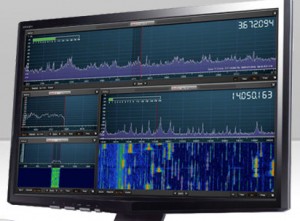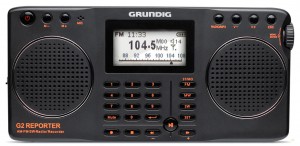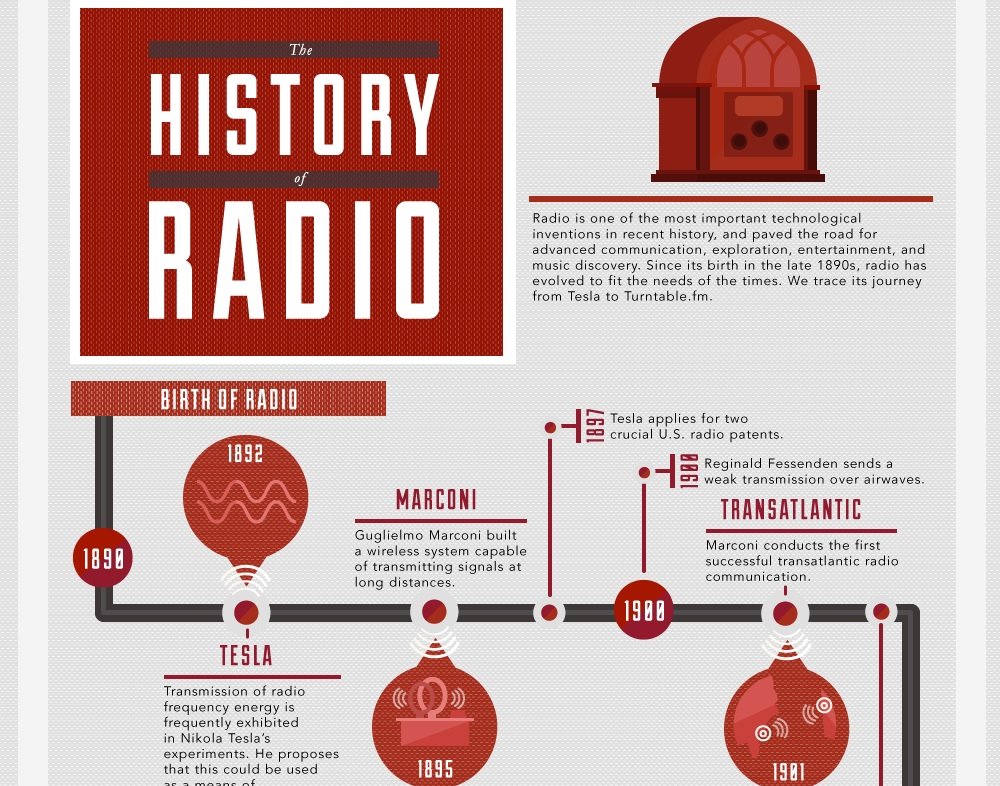The wireless hi-fi system manufacturer, Sonos, recently published this very cool timeline of radio history. Click on the image to open the full-length graphic:
Monthly Archives: February 2012
Shortwave Radio Index now has tags for country of origin

Ten-Tec receivers are Made in the USA
Several readers have written to ask where various shortwave radios are manufactured, and if there are models that are manufactured outside of China.
By and large–with the exception of one Sony model–shortwave portables are manufactured in China, with a few possibly originating in nearby Taiwan and Malaysia. Chinese facilities certainly produce exceptional value for performance…but sometimes you want to buy something built in your own country, or just a little closer to home.
Many models of SDRs, tabletop, and professional receivers are made in Europe, Japan, Australia, and the USA.
As a result of these inquiries, we have now curated the Shortwave Radio Index, our comprehensive list of shortwave radios currently on the market, tagging each entry with its “Made In” country. If not tagged, assume the unit is made in China.
Our compliments and thanks to those who’ve written us. We have to agree: country of origin is worth keeping in mind, when you’re shopping for a receiver.
Click below for receivers:
Note: Please email us if you note any errors or omissions. This is a work in progress. Whenever possible, we’ve actually confirmed the country of origin with the manufacturer.
Guardian article on “the rise and rise of radio”
 (Source: Susanna Rustin, The Guardian)
(Source: Susanna Rustin, The Guardian)
What is it about radio that has made it so durable, and able to coexist not only through the age of television, but the age of new media too? As social networking giant Facebook prepares to float itself and raise an astonishing £5bn, what has enabled radio to stand its ground?
[…]Radio can be made at a fraction of the cost of television, meaning that programme-makers, DJs and entrepreneurs can all have a crack at it. Commercial broadcasters as well as the BBC value it as an incubator for future TV talent. Added to which, radios themselves are cheap, and all over the place: by people’s beds, in the bathroom, in the car.
“Despite the fact you think we’re a visually saturated culture, there are all sorts of places where you get radio and nothing else. The technology of radio is cheap, simple and idiot-proof, and older listeners in particular are going to be very reluctant to let it go,” says [Mark] Damazer.
[…]There is a confidence among many of those who work in radio that what they do will carry on. We remain attached to radio and its rhythms, to the hum and the sound of it. And we get attached to the people who present it, when we don’t violently take against them. Radio is personal.
Couldn’t have said it better myself. Another article filed under “why radio?”
Read Rustin’s full article at The Guardian website.
London pirate radio documentary offers insight
This documentary certainly touches on the motivation behind most pirate radio stations. I should note that while many FM pirate stations are dissapearing with the advent of online sources, shortwave pirates seem to be going strong and they use many of the same remote transmitter tactics that appear in this short film.
If you have trouble watching the embedded video above, please click here for the documentary video page.
Charles Caudill believes in the power of shortwave radio
 Charles Caudill, is president & CEO of World Christian Broadcasting. This week, he wrote a piece in Radio World about why his organization still firmly believes in shortwave radio.
Charles Caudill, is president & CEO of World Christian Broadcasting. This week, he wrote a piece in Radio World about why his organization still firmly believes in shortwave radio.
(Source: Radio World)
In order to make [our] budget go as far as possible, there is no question that we can reach more people on a regular basis with shortwave than with any other method. With an annual budget of something over $3 million, we will be able to broadcast 50 to 60 hours daily from our two broadcast facilities. Those 50 to 60 hours will be produced by six different services: English, Russian, Chinese, Arabic, Latin American and African.
Obviously, we cannot do everything on that limited budget, but we can literally talk to millions of people using shortwave. We don’t have the luxury of being able to cut $40 million or even $14 million from our budget as some international broadcasters can. Our idea is that God has given us the ionosphere. Our job is to make use of it.
There are millions of analog receivers in the world — some say 600 million, some say 1.5 billion, some say as many as three billion. Regardless of the number, those receivers will not be turned off tomorrow. Those receivers will have listeners for years and years.
Look around; even though technology advances with great rapidity, there are still newspapers. I receive mine every morning. There are still AM radios and FM receivers and they are still making more. And you can still buy books. They are still being published. Even though Amazon is making a fortune selling electronic digital reading devices, they still sell books.
[…]My point is, no medium disappears overnight. Our belief is that shortwave will be here for a long, long time.
Studio 1 Software Defined Radio will give your Perseus a resizable interface
 One of the major complaints I hear regarding the benchmark Microtelecom Perseus SDR is that its GUI (graphic user interface) is not resizable or scalable to fit a large monitor at full-screen.
One of the major complaints I hear regarding the benchmark Microtelecom Perseus SDR is that its GUI (graphic user interface) is not resizable or scalable to fit a large monitor at full-screen.
If you’re a Perseus owner and if this is a problem for you, then you need to watch for the release of Studio 1 Software Defined Radio by SDR Applications. Which will boast:
- Fully re-sizable windows/interface,
- support for multiple sessions
- and state of the art visualization, demodulation and filtering
WoodBoxRadio told me that SDR Applications is still finishing off development, but plan to have a bug-free version of their software available at the end of March 2012. They told me that Studio 1 will work with the Microtelecom Perseus, FDM-S1 and the Softrock family of software defined radios (SDRs).
We will stay in touch with WoodBoxRadio and post any updates here on the SWLing Post.
Grundig G2 available in April at Universal Radio
 You can now pre-order the Grundig G2 at Universal Radio for $149.95. Universal believes they will be available in April.
You can now pre-order the Grundig G2 at Universal Radio for $149.95. Universal believes they will be available in April.
Check out their order page for high-res images of the new G2.

